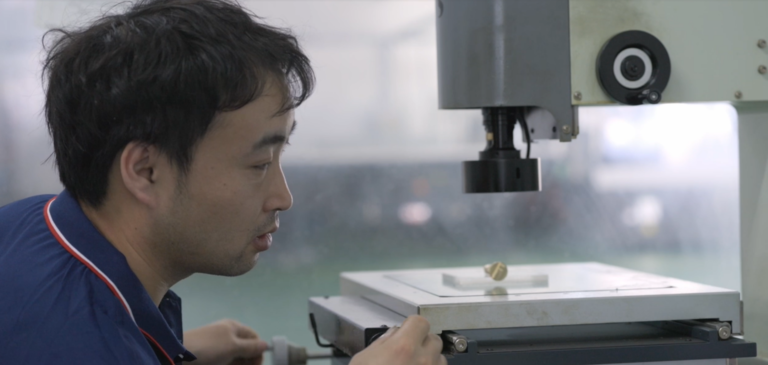Introduction
The ISO 286 standard, established by the International Organization for Standardization (ISO), defines the international system for tolerances and fits for holes and shafts. It is widely applied in mechanical manufacturing, the automotive industry, aerospace, electronics, and precision engineering. For precision fasteners, dimensional accuracy and tolerance fit directly impact assembly quality, mechanical performance, and service life. This article explores the application of the ISO 286 standard in precision fasteners, covering its significance, tolerance system, quality control requirements, and future development trends.
Ⅰ. Importance of ISO 286 Standard
1.1 Ensuring Fastener Assembly Accuracy
Precision fasteners are essential for reliable mechanical connections, and their dimensional accuracy determines fit quality. The ISO 286 standard provides a standardized tolerance and fit system, enabling manufacturers to strictly control fastener dimensional deviations, ensuring interchangeability and assembly precision.
1.2 Improving Mechanical Performance
Excessive dimensional deviations can cause stress concentration in fasteners, affecting their mechanical properties such as fatigue resistance, torque control, and load distribution. Implementing the ISO 286 standard helps optimize fastener design, improving durability and reliability.
1.3 Compatibility with International Standards for Market Competitiveness
ISO 286 provides a consistent dimensional tolerance system for global manufacturing industries, allowing fasteners produced in different regions to be interchangeable. This enhances product marketability and facilitates international trade.
Ⅱ. Tolerance and Fit System of ISO 286
ISO 286 defines various tolerance zones and fit types to meet different application requirements. The key components include:
2.1 Tolerance Zones
Tolerance zones define the acceptable size variation for holes and shafts. ISO 286 categorizes tolerance zones based on:
- Fundamental Deviation: Indicates the shift direction of dimensions, represented by letters (e.g., H, g, k).
- Tolerance Grade: Specifies the range of permissible dimensional variation, represented by numbers (e.g., IT01, IT1, IT5, IT10).
Common tolerance zones include:
- Hole Tolerance Zones: H7, H8, H9, commonly used in precision fastener holes.
- Shaft Tolerance Zones: h6, g6, k6, suitable for bolts, pins, and other fasteners.
2.2 Fit Types
ISO 286 classifies three main types of fits:
- Clearance Fit: Allows easy assembly and disassembly, such as H7/h6.
- Transition Fit: Provides moderate freedom and retention, such as H7/k6.
- Interference Fit: Ensures a tight connection, such as H7/p6.
Ⅲ. Application of ISO 286 Standard in Precision Fasteners
3.1 Dimensional Control in Threaded Fasteners
ISO 286 plays a key role in manufacturing bolts, nuts, and other threaded fasteners. Selecting appropriate tolerance zones, such as h6 or g6, ensures high assembly accuracy, reducing loosening and stress concentration.
3.2 Tolerance Matching for Bearing Fasteners
High-precision bearing bolts and dowel pins require strict dimensional tolerances to ensure rotational accuracy and uniform load distribution. For example, H7/h6 fits are commonly used in precision bearing applications.
3.3 Fasteners in Automotive and Aerospace Applications
Precision fasteners in automotive engines, chassis, and aerospace assemblies require highly consistent dimensional control to maintain safety and reliability in extreme conditions. H7/g6 fits are commonly used for securing fasteners in high-vibration environments.
Ⅳ. Quality Control Requirements in ISO 286
4.1 Dimensional Inspection
ISO 286 specifies measurement methods for fastener dimensional tolerances, including:
- Digital calipers
- Coordinate measuring machines (CMM)
- Laser measuring systems
4.2 Geometric Tolerance Control
Geometric deviations, such as roundness and concentricity, are also regulated by ISO 286 and require high-precision measurement instruments for inspection.
4.3 Surface Quality Inspection
Surface roughness affects the assembly and longevity of fasteners. ISO 286 mandates surface roughness testing to ensure compliance with industry standards.
Ⅴ. Future Development Trends
5.1 Digital and Smart Inspection Technologies
With Industry 4.0 advancements, fastener dimensional inspection is evolving toward automation and digitalization. Real-time monitoring and online measurement systems improve efficiency and consistency.
5.2 Adaptation to New Materials
As new high-strength, lightweight materials become more prevalent, ISO 286 continues to evolve to accommodate advanced manufacturing requirements for tighter tolerances and improved precision.
5.3 Integration with Smart Manufacturing
Future implementations of ISO 286 will further integrate with smart manufacturing systems, utilizing data-driven production models to optimize fastener dimensional control, enhance efficiency, and improve overall product quality.
Ⅵ. Conclusion
The ISO 286 standard plays a vital role in precision fastener manufacturing by establishing unified guidelines for dimensional tolerances, assembly accuracy, and mechanical performance. By selecting appropriate tolerance zones, optimizing fit types, and leveraging smart manufacturing technologies, manufacturers can ensure compliance with international standards, enhance product quality, and increase market competitiveness. As new materials and smart inspection technologies continue to advance, ISO 286 will play an even greater role in precision manufacturing industries worldwide.


